Family room ideas – 10 design rules for informal living spaces
Need a family-friendly space that doubles as a relaxing oasis? These tips will help create a room that is fun for all the household
- (opens in new tab)
- (opens in new tab)
- (opens in new tab)
- Sign up to our newsletter Newsletter
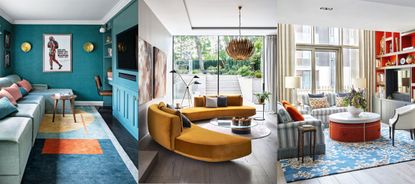

Family room ideas are the perfect spot for gathering as a household, entertaining and even a quiet spot of relaxation, therefore, it is imperative that we give the interior design of these spaces just as much consideration as we would the rest of the home.
While the first reception room may be the place for more formal living room ideas aimed at hosting guests, a family room is the part of the house where movie nights reign supreme, the kids can indulge in their favorite board games, and the whole family can relax in each other’s company.
If your home has just one dedicated family room, you’ll need to work out how to balance even more eventualities – luckily, we’ve pulled together a whole host of solutions to make any living area fit for the whole household.
Turn your family room into a sociable hub for the whole clan with our curated selection of design rules, as told by the experts.
Family room ideas
From the best living room storage ideas to smart seating and furniture arrangements with enough room for everyone to kick back and relax, we’ve sought out some truly inspiring spaces, and asked the experts to share their favorite family room ideas.
1. Maximize storage in a family room

‘As we spend more time at home, we become more aware than ever of the need for space,’ says Simon Tcherniak, senior furniture designer at Neville Johnson. ‘Family rooms that were once forgotten are being rejuvenated as tranquil spaces or multifunctional living (and entertaining) zones.'
'The family room is where the demand is greatest at the moment. Homeowners are looking for a dynamic space that allows them the time to unwind at the end of a busy day but also one that will really benefit from the additional family time we have all been afforded in recent months.’
2. Ensure that your family room is well-lit
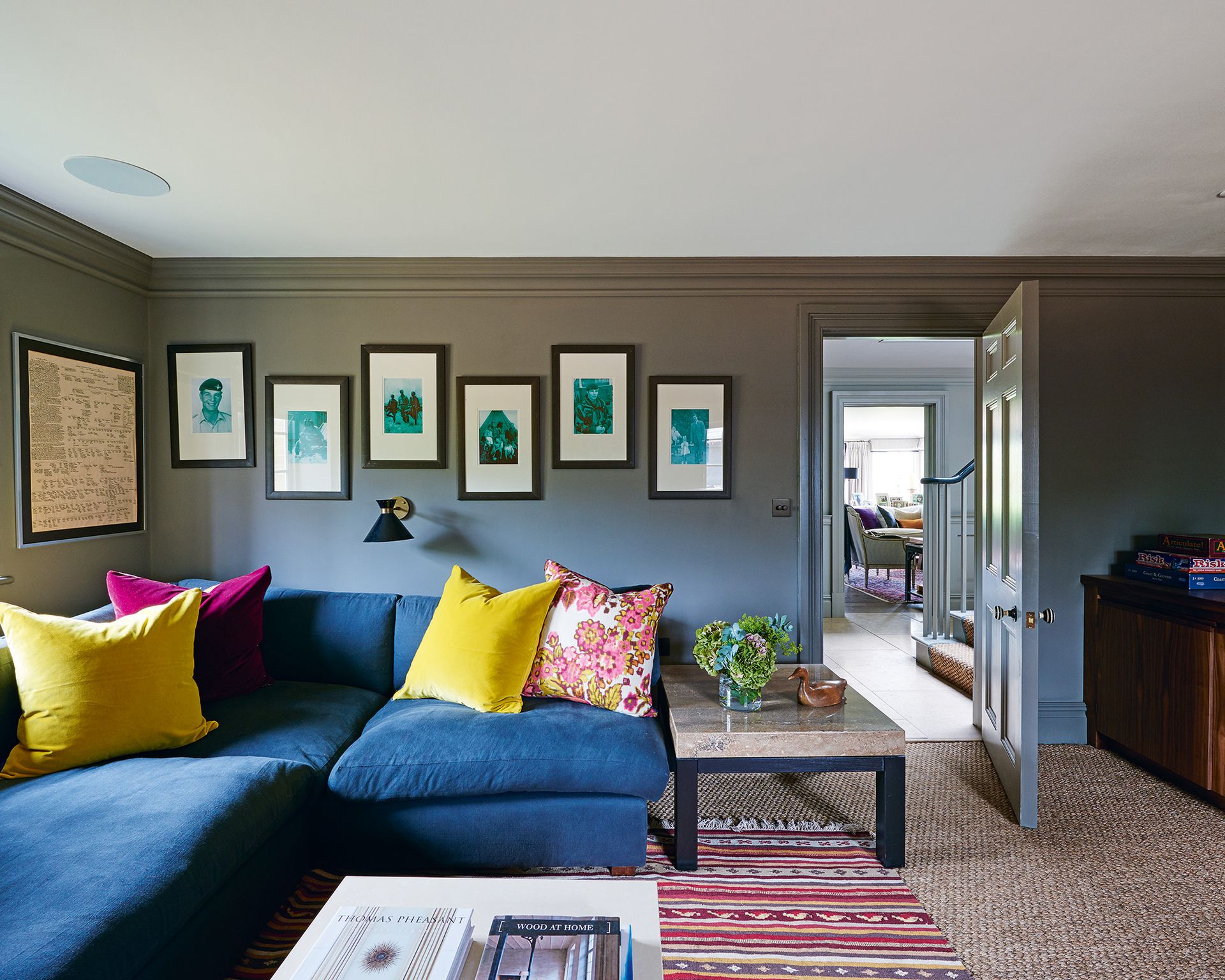
'The first thing I do when planning living room lighting ideas is to find places in a space for table lamps, sconces, picture lights, pendants, floor lamps and desk lights – decorative elements come first,' says Tiffany Duggan of Studio Duggan and Trove.
Consider how the light changes throughout the day when thinking about where to position lights to create the most impact. 'Think about flexible light sources for different situations: a floor light with a swivel arm is ideal as an evening reading lamp behind a sofa or chair,' says Hollie Moreland, creative director of David Hunt Lighting. 'Remember that shade certainly living room color ideas can affect the mood of a room, so for added ambience, choose dark living room tones which will feel moodier and cozier – perfect for movie nights in.'
3. Factor technology into your plans

Provide a place for entertainment without sacrificing style. A TV, and other technology, is an important factor in most family rooms, from Wi-Fi access to background music, and the trend is towards totally concealed solutions.
Don't let a TV spoil your living room aesthetic. Invest in a TV that blends beautifully into the background without interrupting the rest of the scheme, and be sure to keep wires hidden behind cupboards or within the walls.
Alternatively, if you are fitting a wall of living room storage that incorporates a space for your TV, allow sufficient room should you decide to invest in a larger model. Try not to create too big a gap, as your TV will look awkwardly small.
4. Get the furniture right
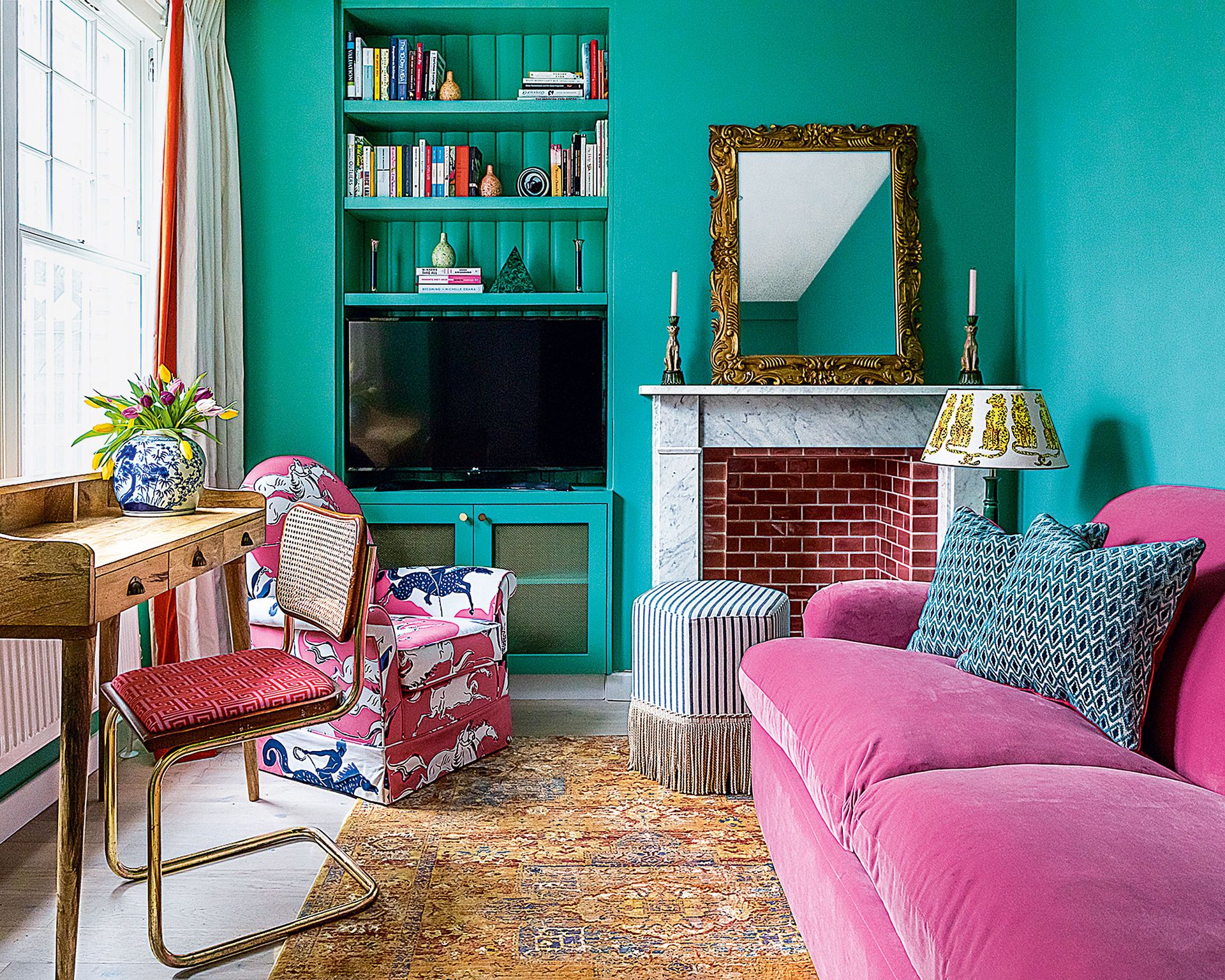
‘Getting the living room furniture right in a family room is one of the biggest challenges in family rooms,' says Mike Fisher, creative director and founder, Studio Indigo (opens in new tab).
'This needs to be a practical space, whether for watching TV or creating good conversation. What you choose needs to be stylish and contribute to the personality and harmony of the space. Inevitably, I find people often graduate to the smaller rooms of a house as they are more intimate and cozier, whereas big rooms can make you feel small and uncomfortable. Be bold with your little space and use large-scale furniture sparingly to give the illusion that the room is grander than it is.’
5. Use pattern to enhance character
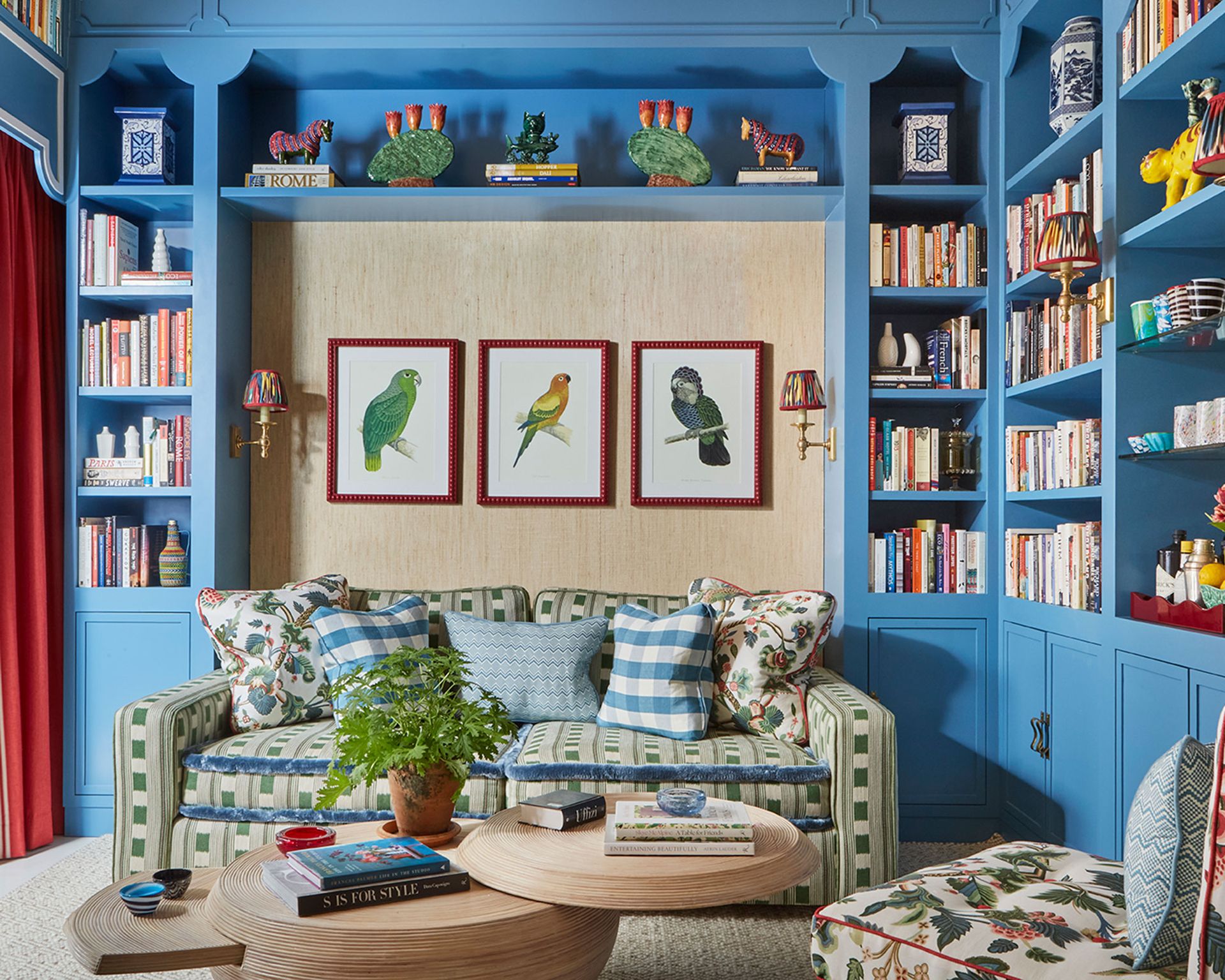
‘The family living room is a communal space and should reflect everyone who lives in the house,' says Eva Sonaike, creative director, Eva Sonaike. 'It is a room where we socialize, entertain and relax so the design should be functional, but also fun. I like to play with pattern and color here. For example, I might use patterned scatter cushions on a living room sofa alongside occasional chairs and pouffes upholstered in fabrics of your choice. These themes can then be echoed in accessories such as ornaments with colorful designs.’
6. Choose furnishings wisely

‘Furnishings play an essential role in how your family room ideas are received – and consumed,' says James Thurstan Waterworth, founder, Thurstan.
'When working with less spacious family rooms, we recommend a considered curation of essential pieces – spreading a large rug as an anchor for the scheme and then building out from there, picking out tones from the rug and embellishing these throughout the room. A central table can create a focal point in a small living room, best framed by inward-facing armchairs which help create depth and volume.’
7. Visually expand your space with clever color choices

‘When a single color is used on both walls and woodwork, a room suddenly feels bigger because having no contrast means that you are less aware of the confines of the space,' says Joa Studholme, color curator, Farrow & Ball (opens in new tab). 'The eye does not stop to register a second color and glides straight out of the window to the view, blending the garden and room together.’
Get your whole family involved in the color process, and step away from the obvious choices. This is a room for the entire household, so now is your chance to get truly creative.
8. Go big in a small family home

‘People often assume they should buy small-scale furniture for small family rooms, but that actually makes a space feel smaller,' says Sheena Murphy, partner, Nune. 'Don’t be afraid to fill the room – get a rug that fully sits under all your furniture, and don’t buy a love seat if you can actually fit a three-seater living room sofa in the room. Not only will buying larger scale furniture look better, it will also make your experience of this sociable space so much more comfortable: win-win!’
9. Create a hub for family life with an open plan space

There is a good reason why open-plan living room ideas are still so popular. Moving beyond the kitchen, a modern open-concept family room ditches the formal living space, home office and reception room in favor of one large, multifunctional space, with entertaining at its heart.
If you are a family that likes to gather – together or with friends – family living room ideas like these will suit your lifestyle. ‘The main motivation for creating an open-concept family space is to be more sociable. Parents can prepare meals while interacting with their children, perhaps helping them with homework, and monitor TV or internet use,’ says Robert Burnett of Holloways of Ludlow (opens in new tab).
What's more, heating and lighting one space rather than several can also help reduce your energy bill in the colder months.
10. Opt for child-friendly furnishings and upholstery
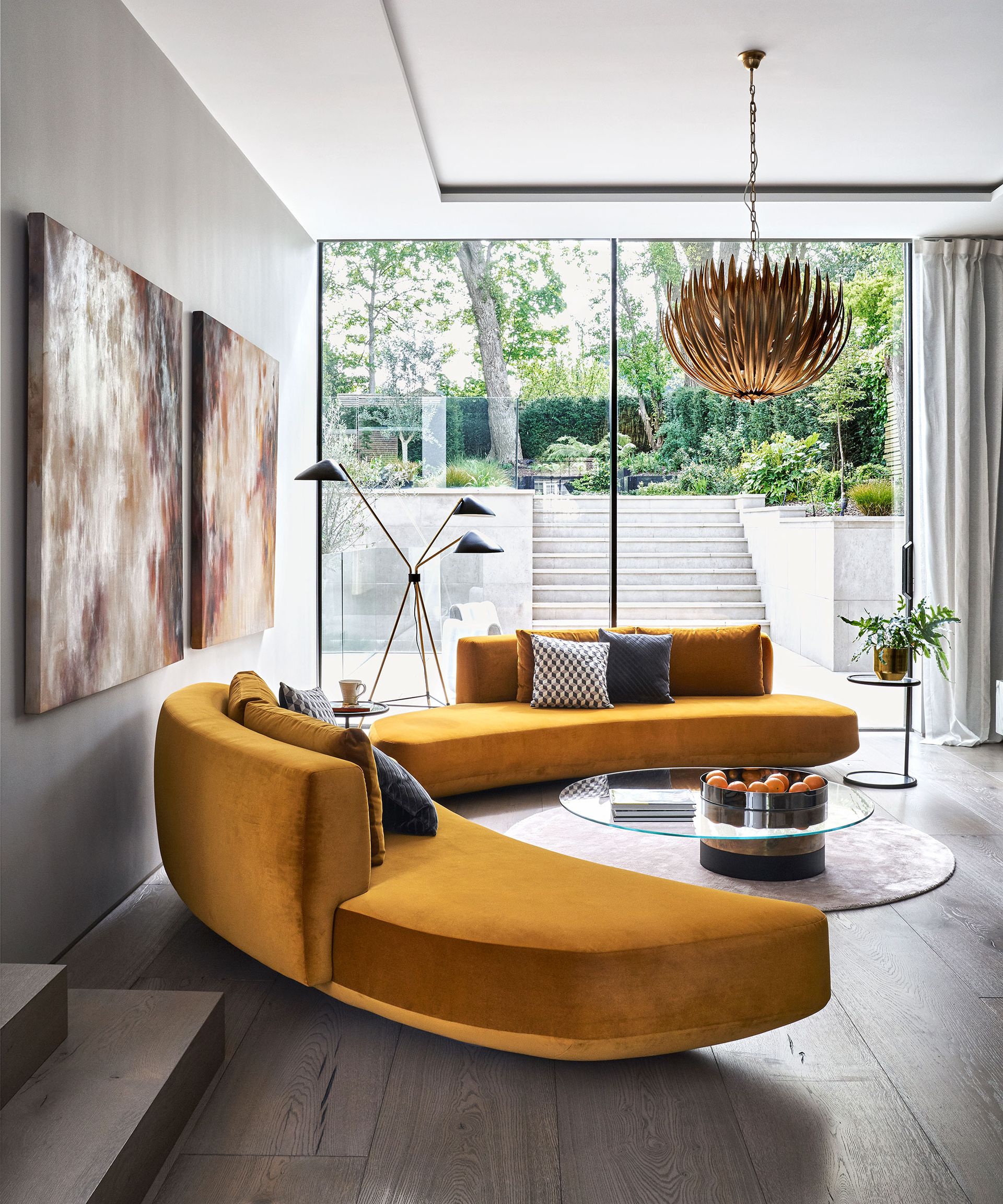
Child and pet-friendly fabrics and finishes are a must for every family room. ‘We don't believe that aesthetics need to be compromised by functionality,’ says Clara Ewart, Head of Design at Kitesgrove (opens in new tab). ‘Clients are often understandably worried about using expensive materials or finishes in rooms used by young children, but there are plenty of fabulous products that are easy to clean and maintain.'
Also, when devising a family room that is safe for children, look to furniture with curved rather than straight edges. 'Curves are very much on trend for 2022, softening the lines in the interior to create a much more welcoming space that is suitable for the entire household,' says Graeme Smith, conceptual designer at Metris.
What do you put in a family room?
When it comes to designing a family room, for most households, a TV is an essential tool for helping adults unwind, keeping the kids entertained, and facilitating cozy movie nights.
Optimum living room seating is another family room idea that should be considered during the initial planning stage. 'We recommend that you plan seating in groups to ensure conversation flows when you have guests and consider scale and how different pieces will sit together,' says interior designer Nina Campbell (opens in new tab). 'Seating heights vary so balance is key, but make sure that everyone is seated at the same level.'
If you want to get the whole family involved in the decorating, consider incorporating a beautifully-curated gallery wall. Informal family rooms are a great place to display family photographs. Alternatively, curate your own feature wall by hanging artwork together as a cluster or group. Decide which paintings, prints or fabric will anchor the scheme then take your decorating cues from them.
What is the difference between a living room and a family room?
'Most living rooms are located at the front of the home and are used for entertaining guests in a formal living room setting,’ explains interior designer Darla Bankston May (opens in new tab). ‘Valuable possessions and family heirlooms are incorporated in the design of the room. The family room is a casual space located towards the back of the home. This room is multifunctional and provides a space for relaxation, recreational activities, and socializing with family and friends.’
‘I think most people understand the family room to be a relaxed space where family and close friends gather, play games, and watch television,’ adds Eyles. ‘The living room used to be a formal place for parties only, more adult, and a lot stiffer – those descriptions are much more fluid today.’
‘Some houses have a game room or media room, and some have done away with any distinction between the family room and living room altogether. We are seeing a lot of people who want only one multi-functional space that works for an elegant cocktail party or family game night.’

Jennifer is the Digital Editor at Homes & Gardens. Having worked in the interiors industry for a number of years, spanning many publications, she now hones her digital prowess on the 'best interiors website' in the world. Multi-skilled, Jennifer has worked in PR and marketing, and the occasional dabble in the social media, commercial and e-commerce space. Over the years, she has written about every area of the home, from compiling design houses from some of the best interior designers in the world to sourcing celebrity homes, reviewing appliances and even the odd news story or two.
-
-
 How to organize a sock drawer – 10 ways to sort socks in style
How to organize a sock drawer – 10 ways to sort socks in styleLearn how to organize a sock drawer so you find your perfect match every time
By Tara King • Published
-
 11 space-saving organizing tips professional use in every small living room
11 space-saving organizing tips professional use in every small living roomThese space-saving tips will free up functional space in any small living room
By Chiana Dickson • Published

